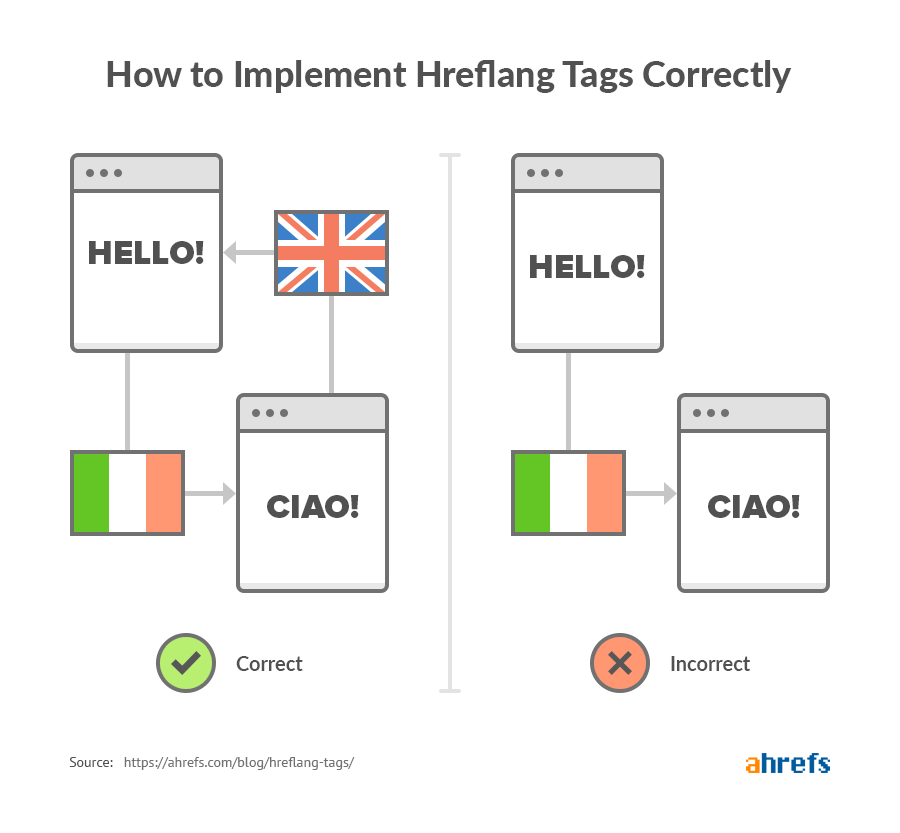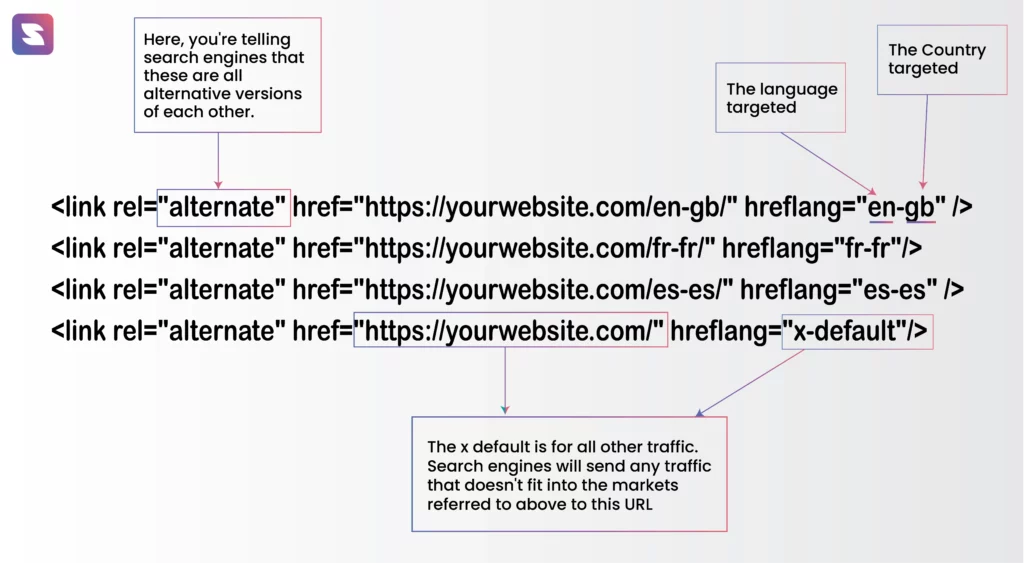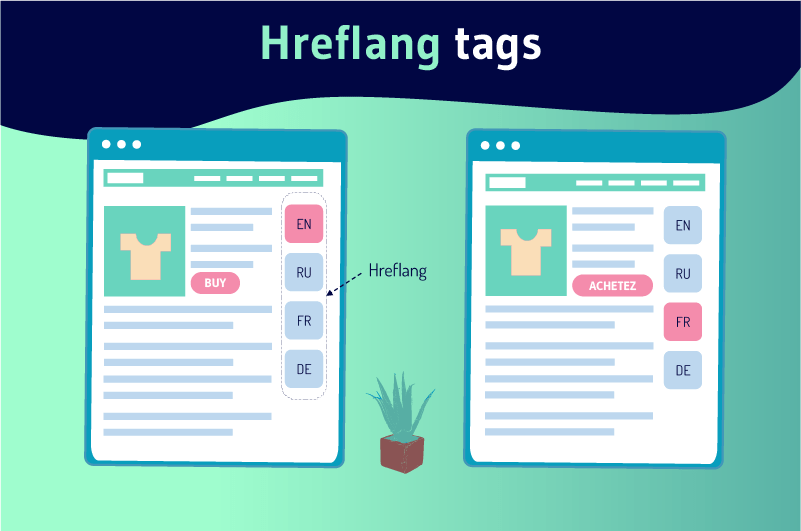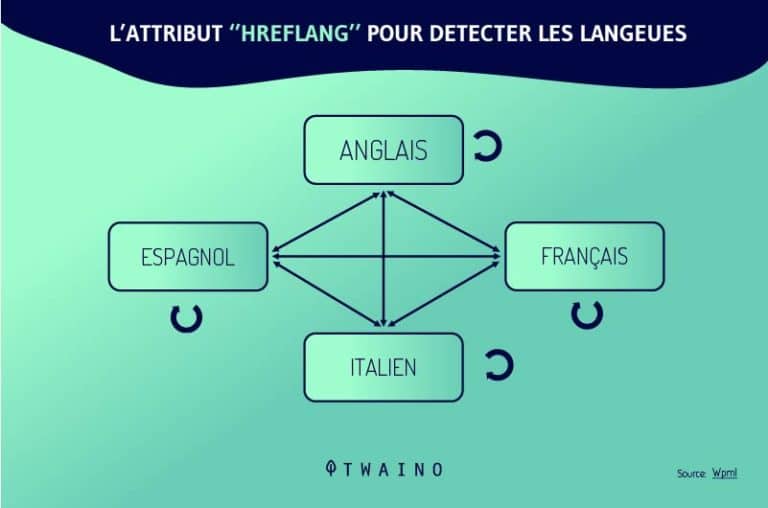Unlock the mystery of hreflang tags and how they can impact your website’s SEO strategy. Don’t miss this essential guide!

Image courtesy of via DALL-E 3
Table of Contents
Introduction to hreflang
Have you ever visited a website and noticed that it is available in different languages? Maybe you saw a button that says “English”, “Spanish”, or “French”. Well, have you ever wondered how the website knows which language to show you? That’s where hreflang comes in! Let’s dive into what hreflang is all about and why it’s so important for websites.
What is hreflang?
Imagine if each language had its secret code, like a special superpower that helps websites show the right language to the right people. Well, hreflang is like that secret code, but for languages on the internet! It tells search engines like Google which version of a webpage to display based on the language preferences of the user.
Why is hreflang important?
Hreflang is super important for websites that have content available in multiple languages. Without hreflang, a website might show the wrong language to visitors, leading to confusion and frustration. By using hreflang, websites can ensure that visitors from different parts of the world see the content in their preferred language, making the online experience much smoother and more enjoyable for everyone.
How hreflang Works
When you visit a website, have you ever noticed that some websites show content in different languages? Have you ever wondered how the website knows which language to display? This is where “hreflang” comes into play. Let’s dive into how hreflang works behind the scenes to make sure you see content in your preferred language.
Matching Languages
Search engines like Google use hreflang tags to understand which language version of a webpage to show to users. These tags act like a map, guiding the search engine to the right language page based on the user’s preferences. So, if you speak Spanish and visit a website that offers content in both English and Spanish, the hreflang tag ensures you see the Spanish version first, making your browsing experience much smoother.
Country Varieties
But wait, there’s more to hreflang than just languages! Sometimes, websites may have different versions of content tailored specifically for different countries. For example, a website may have slight variations in content for users in the United States versus users in the United Kingdom. Hreflang tags can also handle these country-specific variations, ensuring that users see the most relevant content based on their location.
Using hreflang Tags
Adding hreflang tags to a website is like telling search engines which languages your content is available in. It’s like putting labels on your items to make sure people find what they need. Let’s see a simple code snippet:

Image courtesy of ignitevisibility.com via Google Images
<link rel="alternate" hreflang="en" href="http://www.example.com/en/" />
In this example, “en” represents English, and the URL “http://www.example.com/en/” is where the English version of the page can be found. The hreflang tag helps search engines understand that this page is in English and should be shown to users searching in English.
Multiple Languages Setup
Now, imagine your website has content in different languages like English, Spanish, and French. To set up hreflang tags for these languages, you need to add separate tags for each version of the page. Here’s how it might look:
<link rel="alternate" hreflang="en" href="http://www.example.com/en/" />
<link rel="alternate" hreflang="es" href="http://www.example.com/es/" />
<link rel="alternate" hreflang="fr" href="http://www.example.com/fr/" />
Each hreflang tag specifies the language (“en” for English, “es” for Spanish, and “fr” for French) and the corresponding URL where users can access that language version of the page. This way, search engines can show the right content to users based on their preferred language.
Common Mistakes with hreflang
One common mistake that website owners make when using hreflang tags is using incorrect language codes. Language codes are like the secret codes that tell search engines which language a particular webpage is in. If you use the wrong language code, the search engine might get confused and show the wrong language to users. For example, if you use “en-US” for English instead of just “en,” the search engine may not display the content correctly for all English-speaking users.
Not Matching Canonical Tags
Another mistake to watch out for is not matching hreflang tags with canonical tags. Canonical tags help search engines understand which version of a webpage is the original or preferred version. If the canonical tag points to a different URL than the one specified in the hreflang tag, it can lead to confusion for search engines. Make sure that the canonical tag and hreflang tag are aligned to avoid any mix-ups in displaying the correct language versions of your content.
Tools for Checking hreflang
Ensuring that hreflang tags are correctly implemented on your website is crucial for delivering the right content to users in their preferred language. To help you validate and troubleshoot any issues with hreflang tags, there are several tools available that can streamline the process.

Image courtesy of suitejar.com via Google Images
Google Search Console
One of the most valuable tools for checking hreflang implementation is Google Search Console. This free tool provided by Google allows webmasters to monitor how their site is performing in search results and provides insights into any issues with hreflang tags.
By utilizing Google Search Console, you can specifically check the hreflang tags for each language and country version of your website. The tool will highlight any errors or warnings related to hreflang implementation, allowing you to address them promptly to ensure the correct display of content to users.
Third-Party Tools
In addition to Google Search Console, there are several third-party tools available that can help with validating hreflang tags. These tools provide more in-depth analysis and insights into the implementation of hreflang on your website.
Some popular third-party tools include Moz, SEMrush, and Hreflang Tags Generator. These tools can check for proper hreflang tagging, identify errors or inconsistencies, and provide recommendations on how to fix any issues. By using these tools in conjunction with Google Search Console, you can ensure that your hreflang tags are correctly implemented for optimal user experience and search engine visibility.
Examples of hreflang in Use
One excellent example of a website successfully utilizing hreflang is a global e-commerce platform that sells fashion products. This website has versions in multiple languages, catering to a diverse international audience. By implementing hreflang tags correctly, the website ensures that users searching in different languages are directed to the appropriate localized version of the site.
For instance, a user searching for “red dress” in French would be directed to the French version of the website, displaying search results in French. This seamless experience not only enhances user satisfaction but also improves the website’s visibility in search results across different countries.
Example Website 2
Another compelling example is a travel website that offers destination guides and booking services. This website targets users from various regions and countries, each speaking different languages. Through the strategic use of hreflang tags, the website ensures that users are directed to content in their preferred language and country variant.
For instance, a user from Spain searching for “beach vacation” would be directed to the Spanish version of the website, where they can find relevant information tailored to their location and language. This personalized approach not only enhances the user experience but also boosts the website’s search engine rankings by providing targeted content to users worldwide.
Keeping hreflang Up-to-Date
It’s essential to keep your hreflang tags up-to-date to ensure that your website continues to display the correct language versions of your content to users. Regular maintenance and updates are vital for a smooth user experience and effective SEO.

Image courtesy of www.twaino.com via Google Images
Regular Audits
Regularly auditing your hreflang tags is crucial to identify any issues or errors that may have arisen. Conducting audits ensures that all language and country codes are accurate and up-to-date, helping search engines display the right content to the right users.
Updating Content
When updating your website content in different languages, be sure to also update the corresponding hreflang tags. Any changes in content, such as new pages or revised text, should be accompanied by updates to the hreflang tags to maintain consistency and accuracy.
Benefits of Using hreflang
When websites implement hreflang tags correctly, it ensures that users are directed to the version of the site that corresponds to their preferred language. Imagine visiting a website and automatically seeing all the content in a language you understand without having to manually change settings or search for the right language option. This personalized experience makes it easier for visitors to navigate the site, find the information they need, and engage with the content effectively.
Improved SEO Performance
Search engine optimization (SEO) plays a crucial role in determining how easily people can find your website online. By using hreflang tags, you are telling search engines like Google which version of your content is relevant to specific languages or regions. This helps search engines serve the right content to users in different locations, ultimately boosting your website’s visibility and ranking in search results. Additionally, hreflang tags can prevent issues like duplicate content penalties, ensuring that your site maintains a strong presence in search engine results.
Conclusion
In conclusion, hreflang is a vital tool for websites with content in multiple languages. By implementing hreflang tags correctly, websites can ensure that users are directed to the most relevant content in their preferred language, ultimately enhancing user experience and SEO performance.

Image courtesy of www.twaino.com via Google Images
Summarize Key Points
Throughout this article, we have explored what hreflang is and why it is important for websites. We discussed how hreflang tags help search engines match languages and country variations to display the right content to users. We also delved into common mistakes to avoid when using hreflang, the tools available for validating hreflang implementation, examples of successful use cases, the importance of keeping hreflang up-to-date, and the benefits it brings to user experience and SEO.
Final Thoughts
As a website owner or developer, understanding and correctly implementing hreflang tags can significantly improve the way your site reaches a global audience. By paying attention to the details outlined in this article and staying proactive in maintaining and updating hreflang tags, you can enhance the overall performance and visibility of your website in search engine results. Remember, hreflang is a powerful tool that, when used correctly, can make a world of difference in how your website connects with users from different linguistic backgrounds.
Want to turn these SEO insights into real results? Seorocket is an all-in-one AI SEO solution that uses the power of AI to analyze your competition and craft high-ranking content.
Seorocket offers a suite of powerful tools, including a Keyword Researcher to find the most profitable keywords, an AI Writer to generate unique and Google-friendly content, and an Automatic Publisher to schedule and publish your content directly to your website. Plus, you’ll get real-time performance tracking so you can see exactly what’s working and make adjustments as needed.
Stop just reading about SEO – take action with Seorocket and skyrocket your search rankings today. Sign up for a free trial and see the difference Seorocket can make for your website!
Frequently Asked Questions (FAQs)
What happens if I don’t use hreflang?
If you don’t use hreflang on a multi-language website, there can be significant issues. Without hreflang, search engines may not understand that your website has content in multiple languages. This can result in users being shown the wrong language version of your site, leading to confusion and frustration. Additionally, without hreflang, your website may not rank as well in search results for users searching in different languages.
Can I use hreflang for different dialects?
While hreflang is primarily used to differentiate between different languages, it can also be utilized for different dialects of the same language. For example, if you have content in both American English and British English, you can use hreflang to indicate to search engines which version to display to users based on their language preferences. This can help enhance the user experience for visitors who speak different dialects of the same language.







